It’s easy to take one glance at a skilled gardener pruning plants and carefully arranging specialized fertilizer and think it’s impossible to develop the green thumb yourself. Imagine the years of experience that must be necessary! It’s a challenge to create a space where vegetation thrives, but it doesn’t have to be.
If you desire an adorable little — or even large and lush — garden around your home, there are plenty of neat tricks and great advice to get you started on the right foot. Or, should we say, green foot!
1. Deadhead frequently: No, this doesn’t mean jam out to the Grateful Dead (but how cool would that be?). It simply means make sure to prune dead flowers as often as possible so new ones have room to sprout.
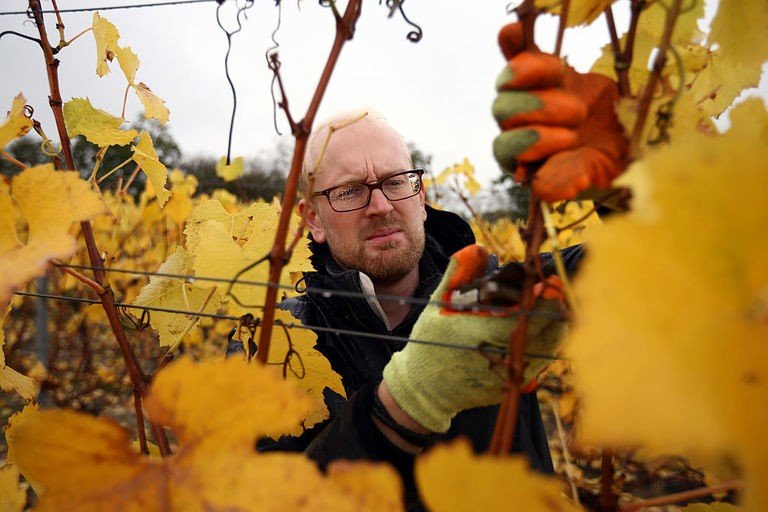 Carl Court / Getty Images
Carl Court / Getty Images
2. Rotate crops: It’s vital not to plant the same species in the same spot of the garden year after year. Rotate them every time you begin your yearly gardening to ensure the soil stays nutrient-filled.
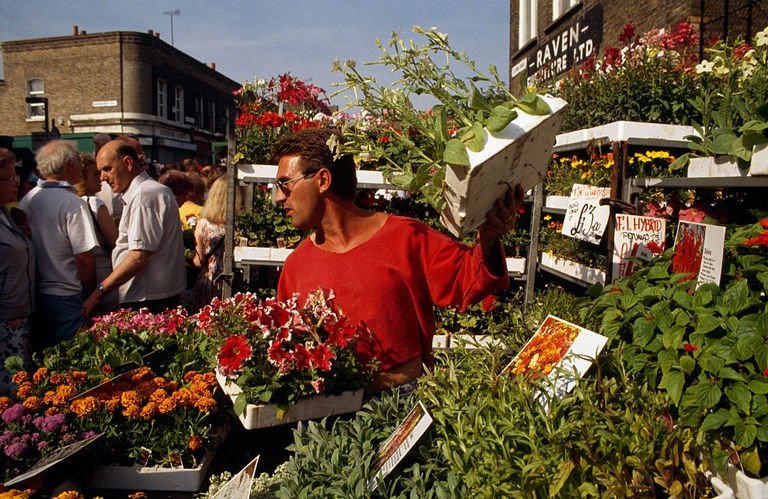 Gideon Mendel / Getty Images
Gideon Mendel / Getty Images
3. Understand lawn drainage: The last thing you want happening is to create a garden you’re super proud of only to have it drowned out after a storm. Learn where the water drains out the best after heavy rainfalls.
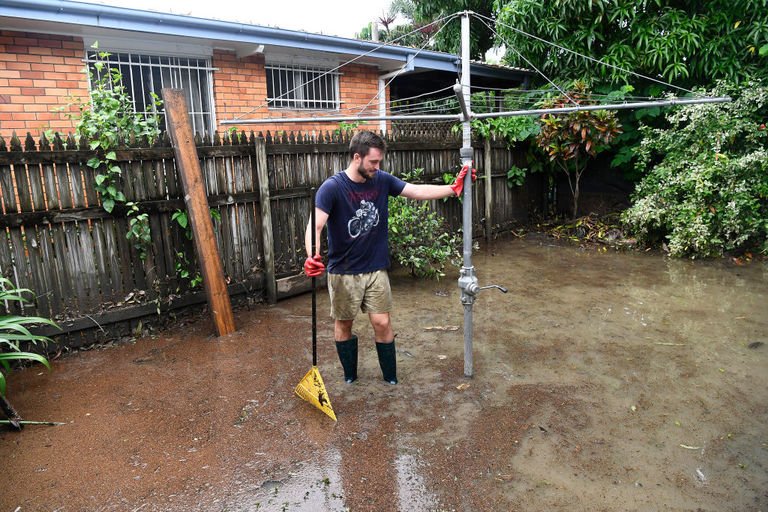 Ian Hitchcock / Getty Images
Ian Hitchcock / Getty Images
4. Choose a spot wisely: It’s imperative that your decision to start a garden involves a spot that’s ideal for the vegetation. You’ll want an area that gets direct sunlight for at least half the day.
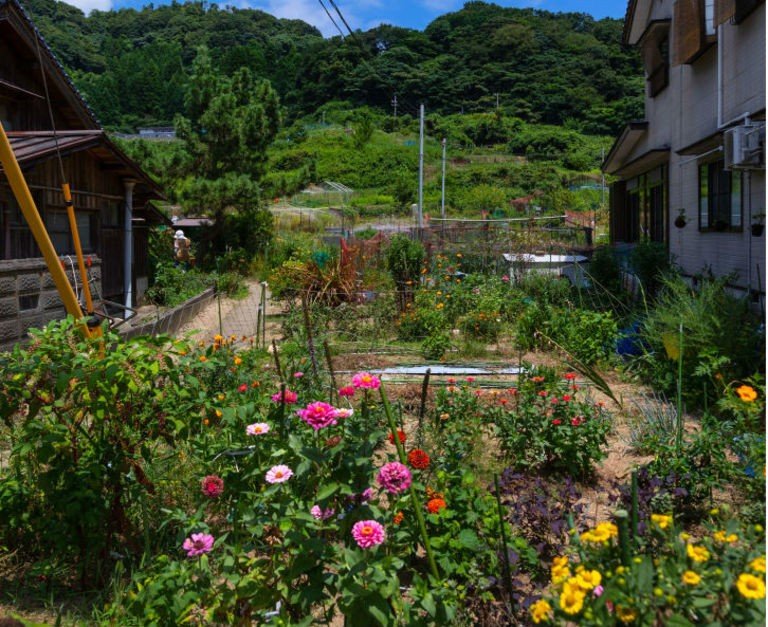 Eric Lafforgue / Getty Images
Eric Lafforgue / Getty Images
5. Know your fertilizer: When combing through the various options, hardcore gardeners look for three key ingredients: nitrogen, phosphorus, and potassium. All three of these ensure plants will grow in a mineral-rich environment.
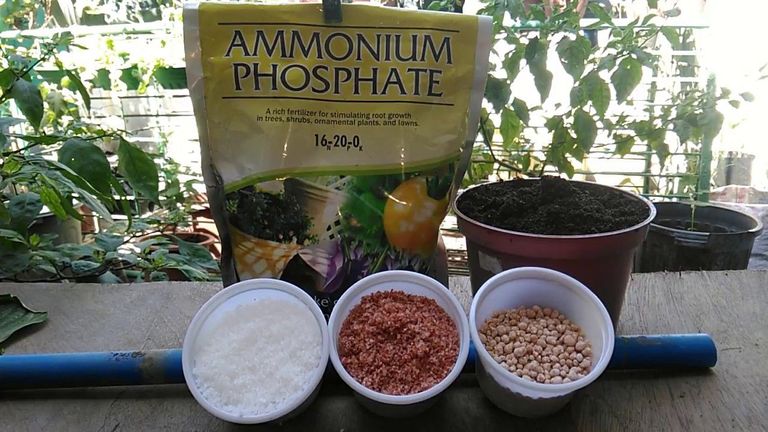
6. Dig up weeds: Regardless of whether or not you garden, you don’t want weeds leaving your lawn looking unsightly. In order totally eliminate each weed, rip it up by the deepest root possible.
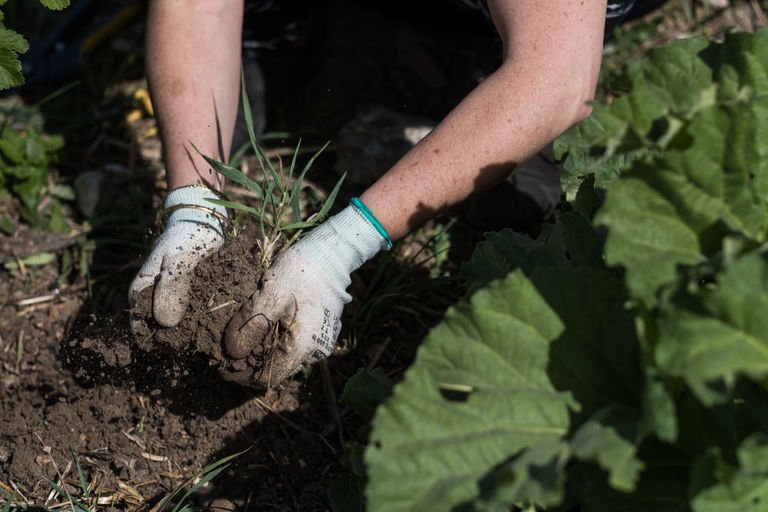 Richard Bord / Getty Images
Richard Bord / Getty Images
7. Grease your shovel: One of the most annoying aspects of planting a garden is when the soil you’re digging sticks like glue to the shovel. A layer of petroleum jelly or WD-40, however, fixes the issue.
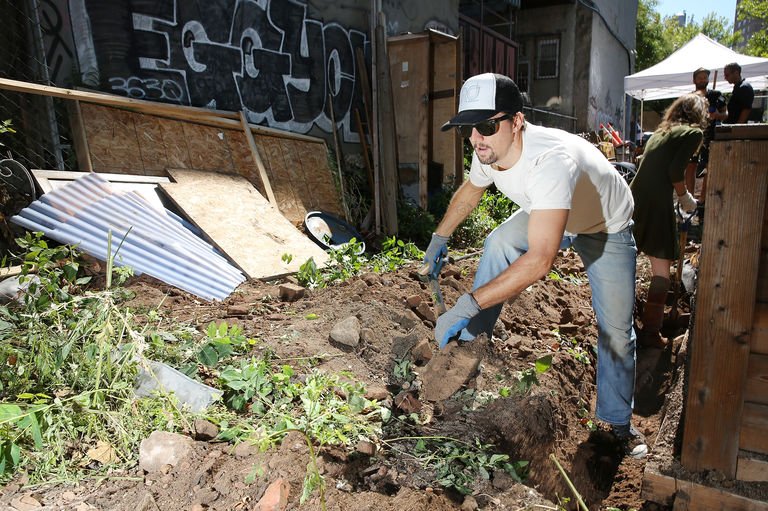 Jemal Countess / Getty Images
Jemal Countess / Getty Images
8. Save Autumn leaves: Old leaves act as wonderful mulch, compost, and fertilizer — that’s a threefer! Plus, you can lay the leaves over a garden to prevent frost damage.
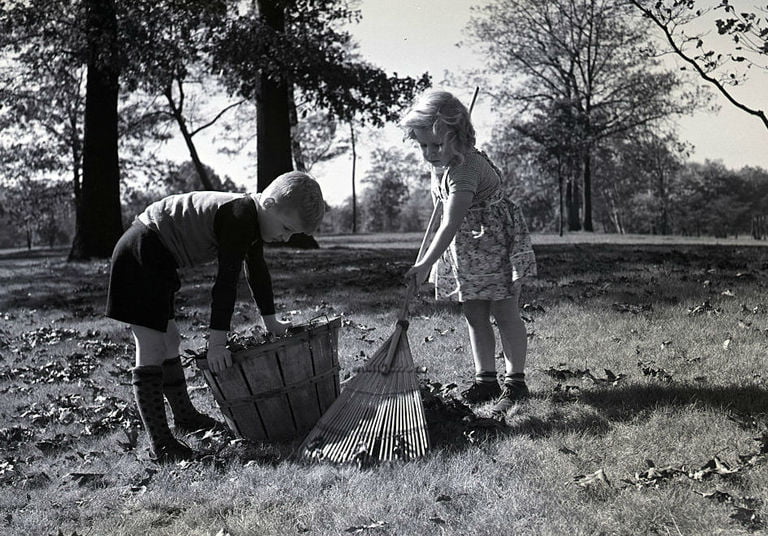 Bettmann / Getty Images
Bettmann / Getty Images
9. Save those seeds: Growing foods like tomatoes and other veggies that have seeds is super easy! Save the seeds, let them dry out, and then place them into rich potting soil. Pretty soon you won’t have to buy produce anymore!
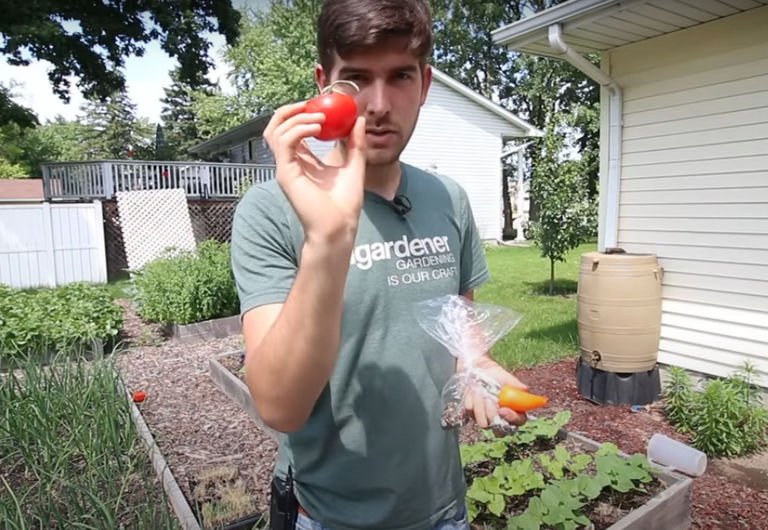
10. Understand potting soil: Sometimes the soil you purchase for potted plants comes with fertilizer mixed in. However, make sure you read up on whether or not the plant needs additional fertilizer just in case.
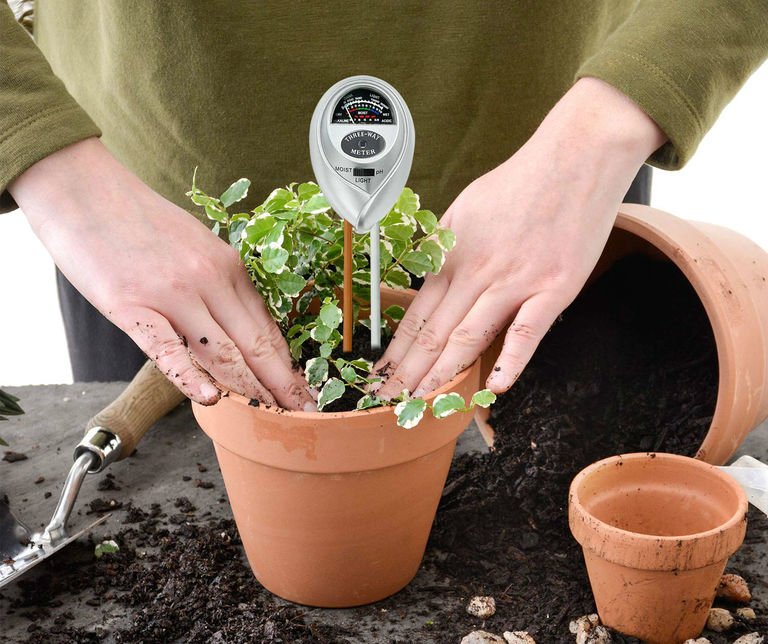 Lifestyle Home garden
Lifestyle Home garden
11. Don’t rake your garden: As tempting as it is to rake up the hundreds of dead leaves that might cover a garden during the fall, leave them be! The leaves provide great fertilizer as they slowly decompose.
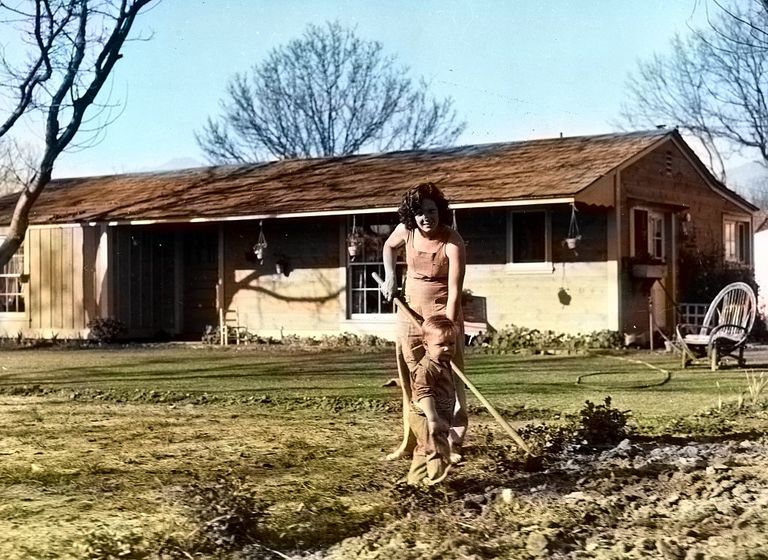 Smith Collection / Getty Images
Smith Collection / Getty Images
12. Unravel bound roots: Sure, buying potted plants is definitely more convenient than potting them yourself, but the bound roots on many of them don’t allow for maximum nutrient consumption. Use your hands to break the mold apart.
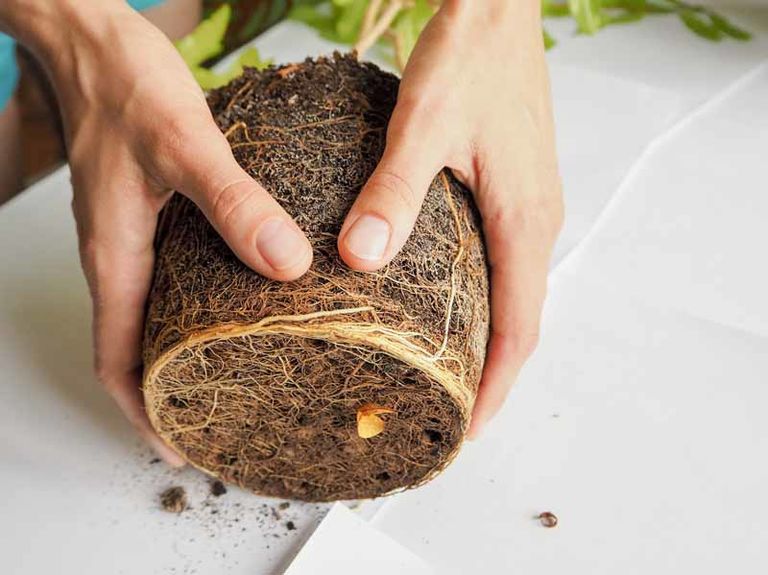
13. Study hardiness zones: Hardiness Zone maps are created by United States Department of Agriculture, and before you plant anything check them out to learn which species flourish in your particular area for maximum vegetation.

14. Learn about soil: Before you go out and buy a bunch of plants you think will flourish, learn all about the soil on your property so you don’t waste money buying seeds that won’t grow.
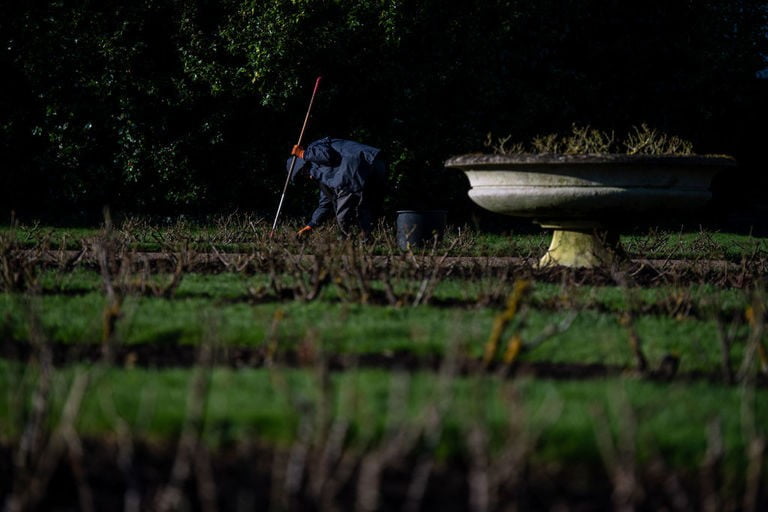 Chris J Ratcliffe / Getty Images
Chris J Ratcliffe / Getty Images
15. Lighten your load: Lugging around pots can be a strain on your back, so do yourself a favor and fill the bottom half of large pots with packing peanuts to significantly cut down the weight.
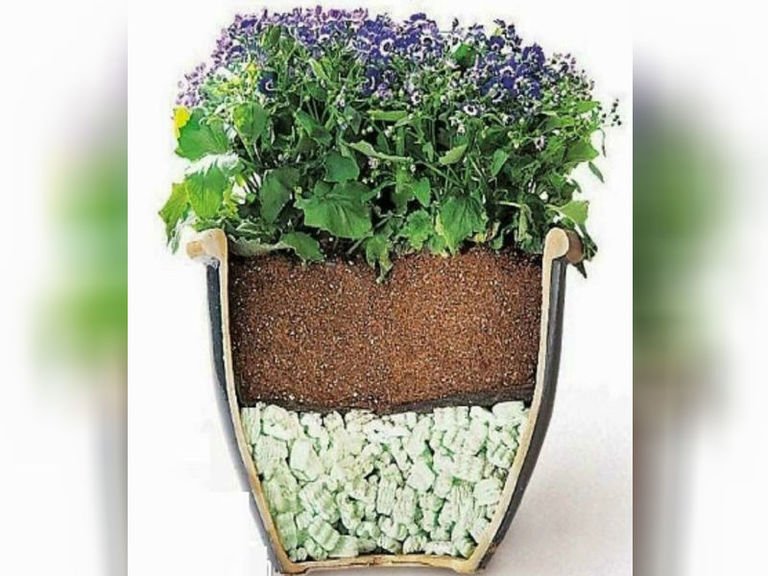
16. Watch your pets: Gardens can be fun places for pets to investigate, but if you’re going to let Fido explore it, make sure your plants are pet-friendly — some species are poisonous when consumed!
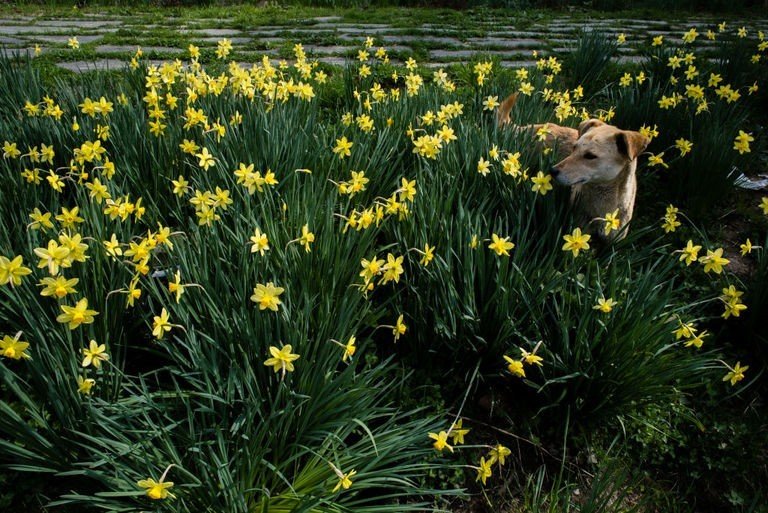 Yawar Nazir / Getty Images
Yawar Nazir / Getty Images
17. Time your seeds out: The time of the year you plant stuff has a massive impact on whether or not it lives or dies. Do some research and plant everything accordingly instead of wasting time by screwing everything up.
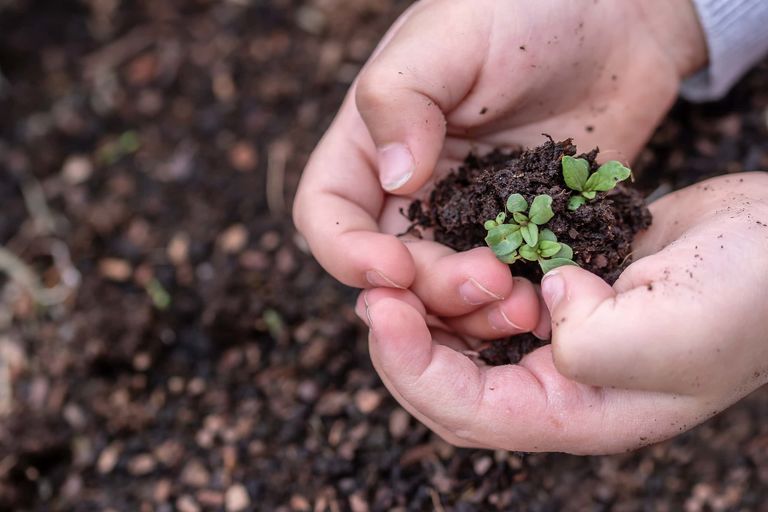 Pixabay
Pixabay
18. Deter squirrels: The bulbs of many flowers double as the perfect snack for those pesky squirrels. To keep those bushy-tailed buggers away from your hard work, cover the garden with chicken wire cut to size.
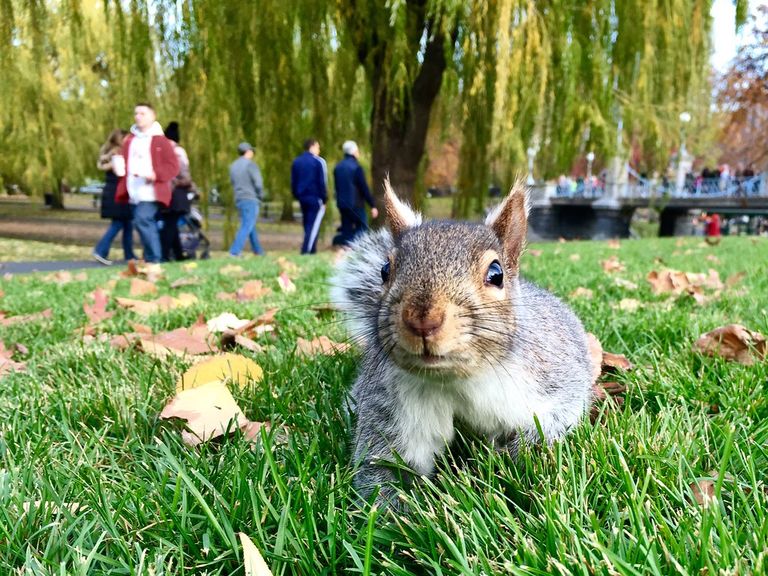 Jessica D / Flickr
Jessica D / Flickr
19. Shift perennials around: Gardeners often carefully dig up their perennials and relocate them in late summer or early autumn. This helps with growth and size control. Just make sure you don’t split them where they’re blooming.
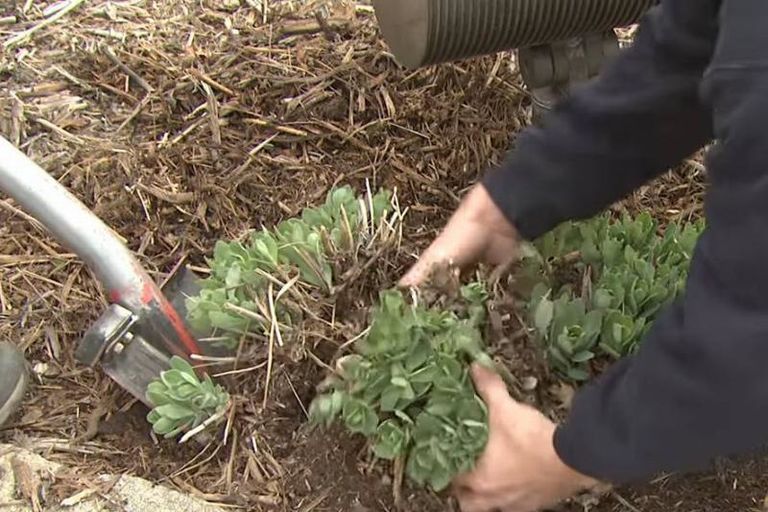
20. Segregate aggressive plants: Certain species will overtake a garden, so make sure you give them their own confined space. Also, watch out for hazardous species if you’re clearing out an area, and few are worse and hogweed.
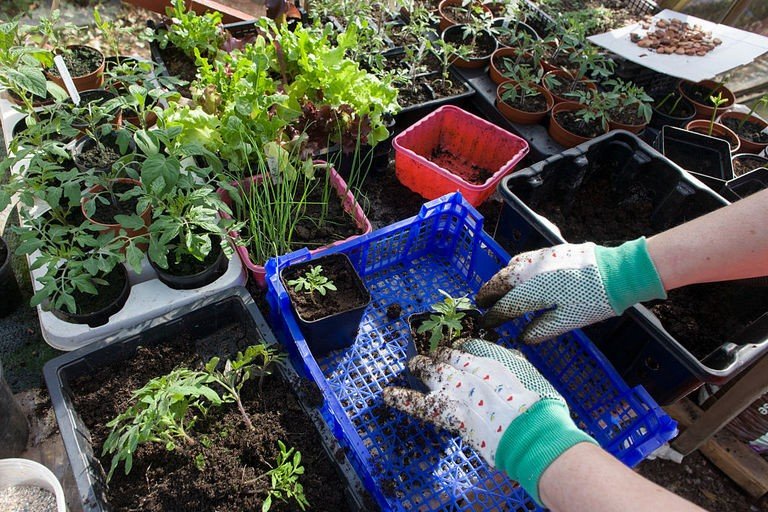 In Pictures Ltd. / Getty Images
In Pictures Ltd. / Getty Images
Hogweed is believed to have originated in the Caucasus region of eastern Europe, first sprouting in places like Russia, Georgia, and Azerbaijan. Those that lived among the plants knew how dangerous they were; foreigners, however, weren’t as well-versed.
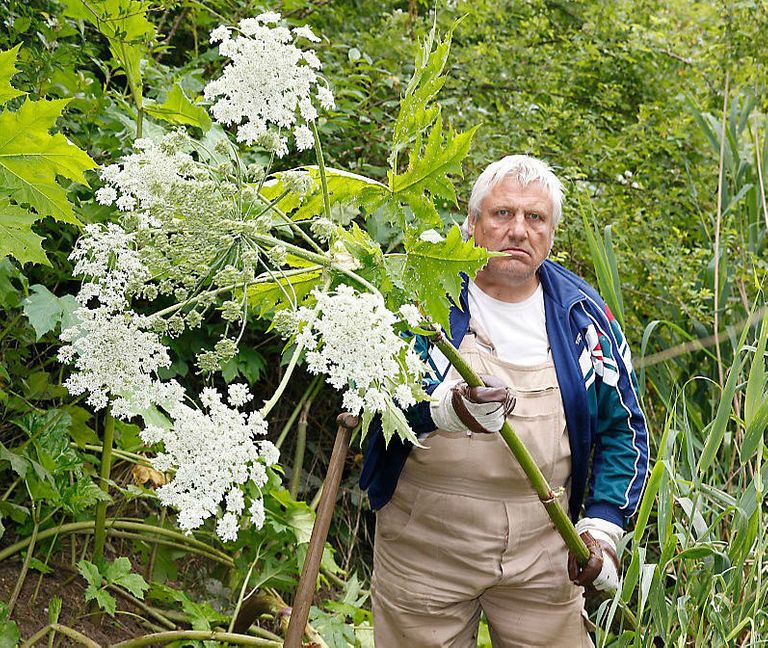 Times Herald News
Times Herald News
To them, these plants were just pretty white flowers, exactly the kind of ornamental shrub that’d look perfect in a garden. It was only a matter of time before would-be horticulturists began spreading the weed to other parts of Europe.
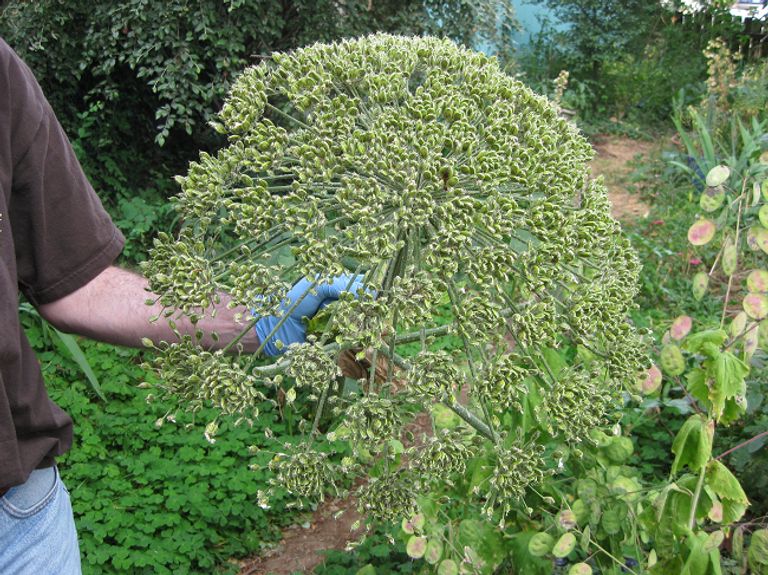
By 1817, the plant had made its way to Great Britain, appearing on the seed list at Kew Botanic Gardens in London. Just a decade later, it was spotted growing wild throughout the foothills of Cambridgeshire, England.
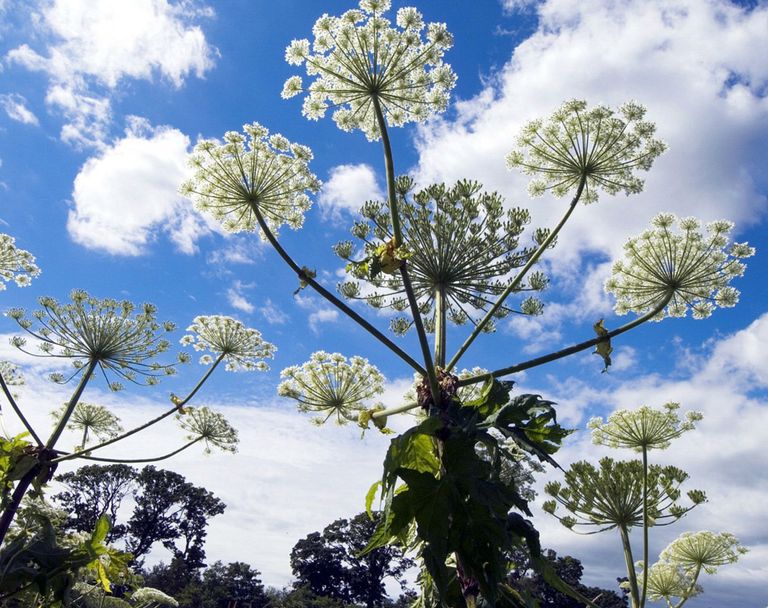 Scottish National Heritage
Scottish National Heritage
For the next century, the weed continued to spread across Europe unabated, even as word of its ill effects became more and more well-known. Gardeners continued to plant it in their flowerbeds, and farmers even fed it to their livestock.
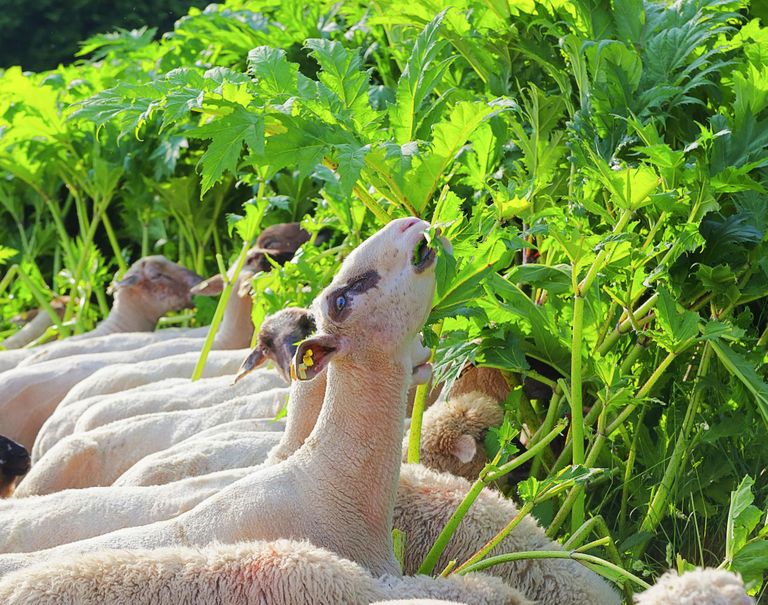 The Herald
The Herald
Eventually, though, the dangers of the plant became too great to ignore, and concentrated efforts were made to prevent its further spread. Yet by this point it was too late: the weed had already made its way to North America.
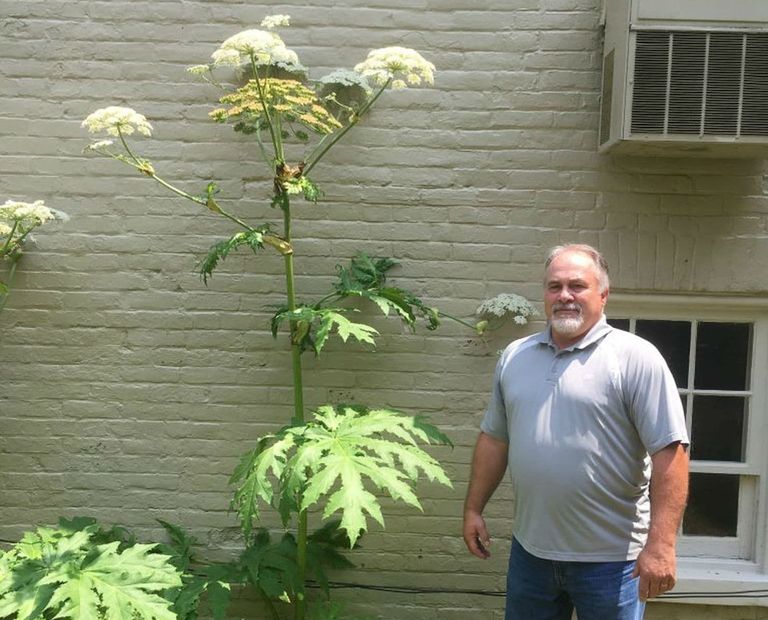
Intended for display in botanical gardens throughout Canada and the United States, the first plant rooted near Highland Park in the city of Rochester, New York. From there, it began popping up everywhere from Ontario to Maine to even as far west as Washington.
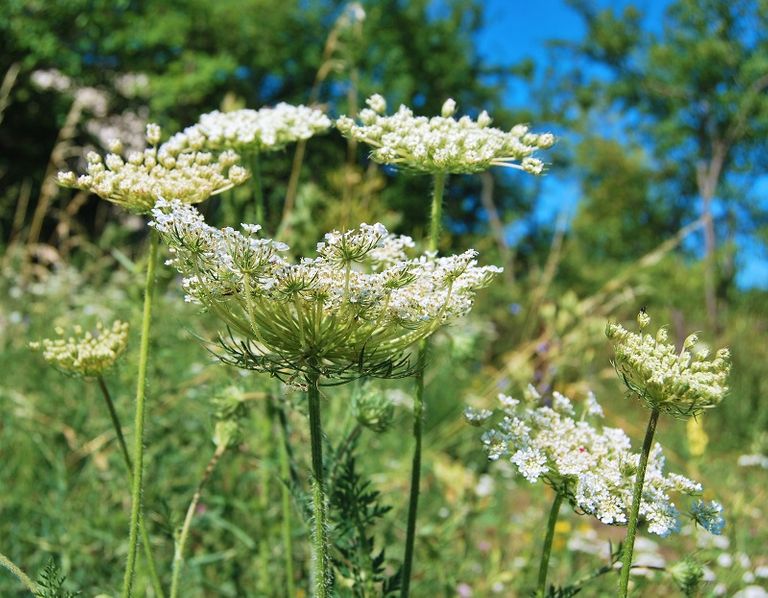
But as the truth about the plant made its way overseas, those in North America also began taking measures to rid themselves of it. Before long, the invasive weed’s growth was almost entirely under control… or so we believed.
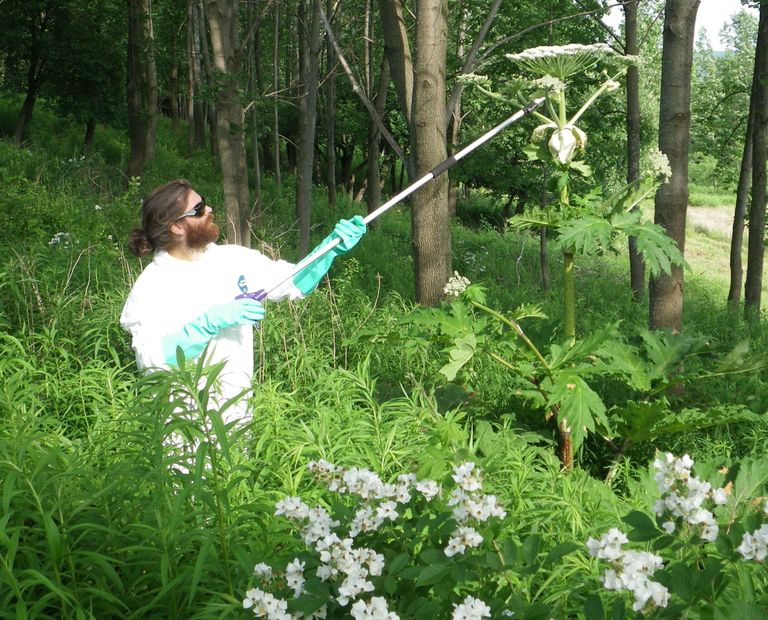 NYS DEC / Flickr
NYS DEC / Flickr
In 2018, a Virginia gardener was tending to their plants when they developed burns trademark of the notorious weed. The burns were so severe, in fact, that the gardener actually spent the next 48 hours being treated in an ICU.

When family members returned to check the flowerbeds, the dirt was littered with the plant’s signature white flowers. This marked the first appearance of the weed in Virginia — and the beginning of a nationwide crisis.
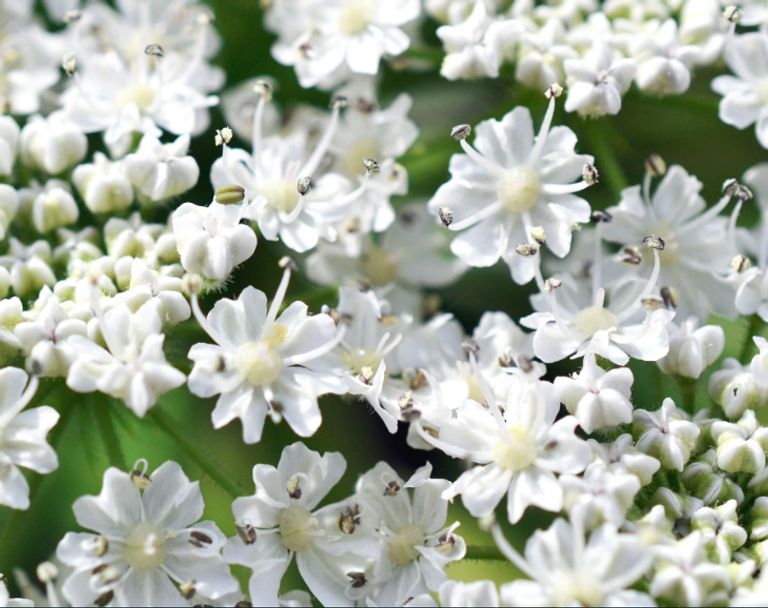 The Telegraph
The Telegraph
Yet what was this dangerous plant? That question isn’t as easy to answer as you’d think. While its scientific name is Heracleum mantegazzianum, it’s also known as the cartwheel-flower, giant cow parsnip, hogsbane, and even wild rhubarb.
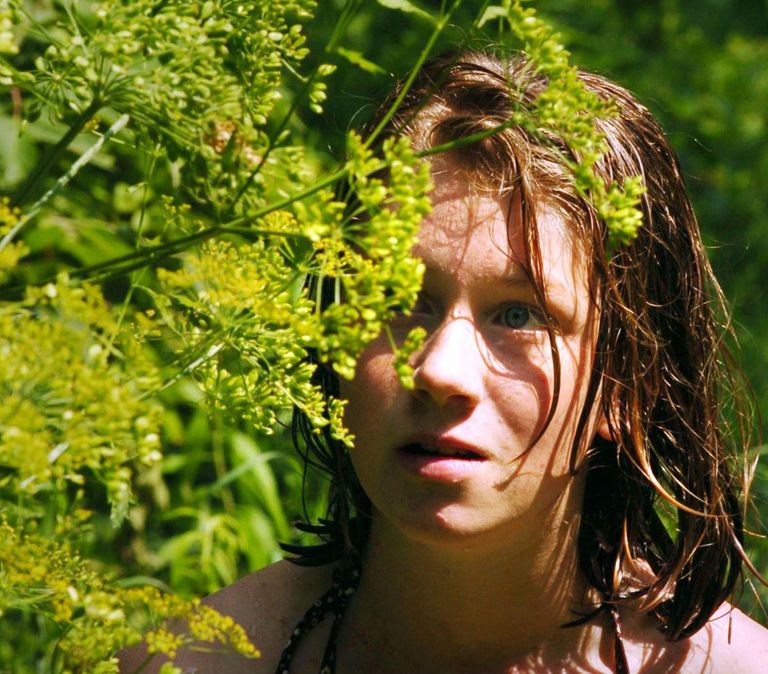 Meredith Kaiser
Meredith Kaiser
But one moniker seems to trump all others: giant hogweed. Sure, the name doesn’t sound too threatening, but beneath its seemingly gentle exterior lies a poison so potent that it can have you out of commission for years at a time.
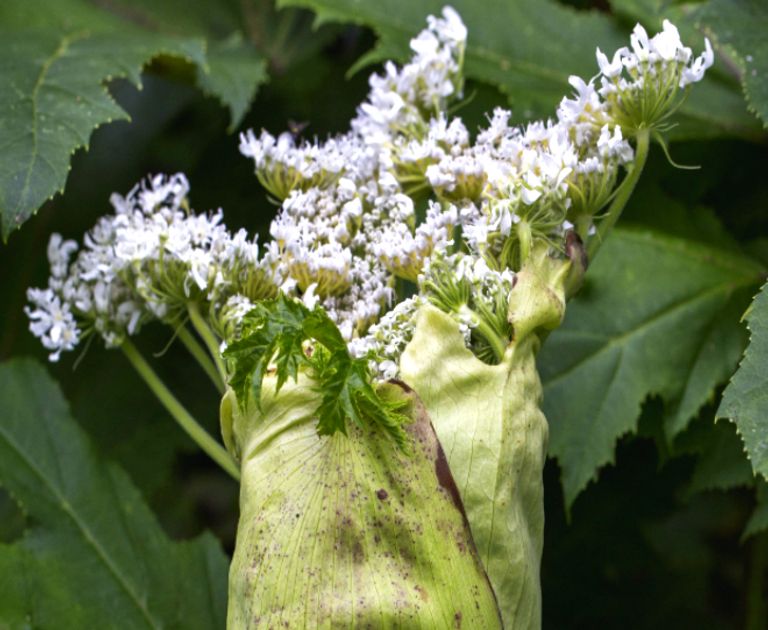
The sap of the giant hogweed is phototoxic, meaning it interferes with the skin’s ability to protect against sunlight. This then leads to phytophotodermatitis, causing the skin to burn and bubble once exposed to even the slightest bit of sun.
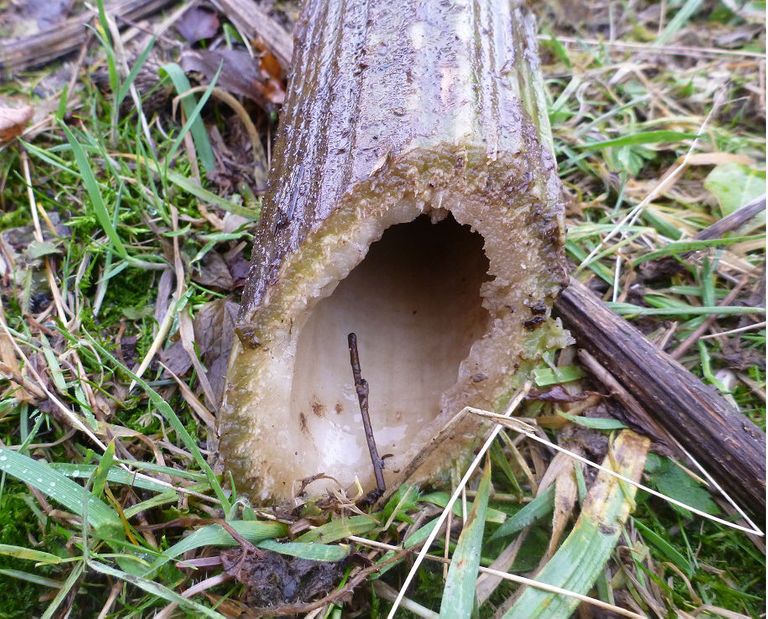 Wise Knotweed Solutions
Wise Knotweed Solutions
Photosensitivity brought about by giant hogweed sap usually persists for a few days, though depending on how much sunlight exposure you’ve received, the damage can be irreversible. If the sap enters the eyes, for example, it can cause permanent blindness.
 Danielle Wang / Flickr
Danielle Wang / Flickr
For those that do come in contact with the dangerous sap, washing the affected area with soap and cold water should be enough rid the skin of the toxin. However, sunlight exposure should be limited until the skin heals, which could take up to several months.
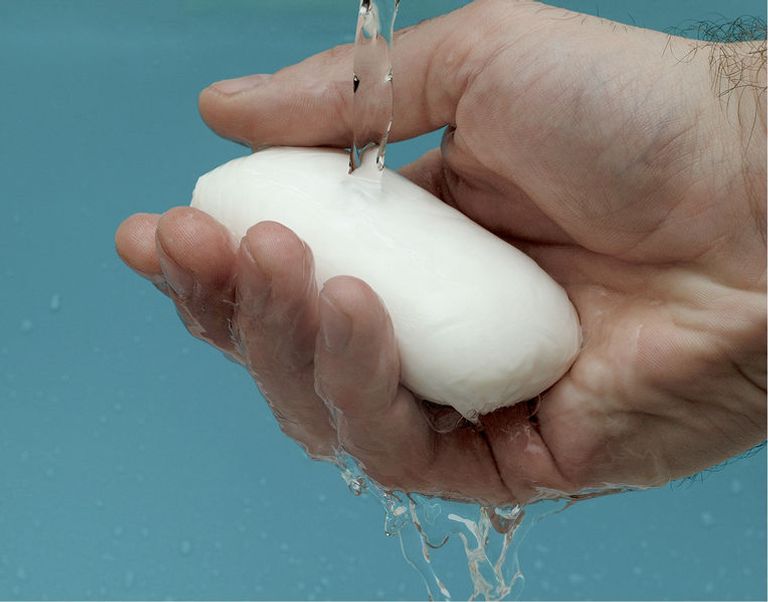 Dakota Local / Flickr
Dakota Local / Flickr
In one instance, a Virginia landscaper was forced out of the sun for two years after a particularly serious run-in with the plant. The teenager had inadvertently touched his face after handling a bundle of giant hogweed, causing the whole thing to peel right off.
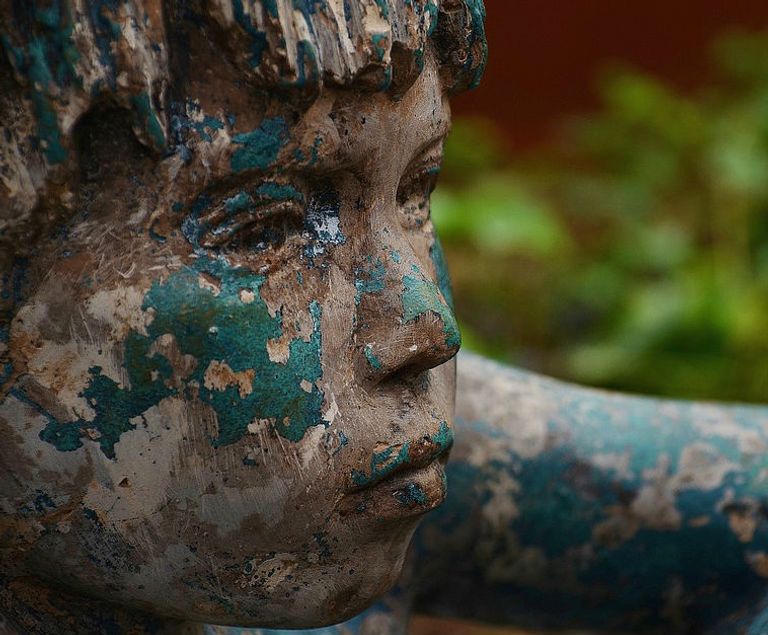
Fortunately, more and more people are now raising awareness of the dangers of giant hogweed. Many countries now list the weed as an invasive species, and the European Union even created the European Giant Alien Project in order to completely eradicate it.
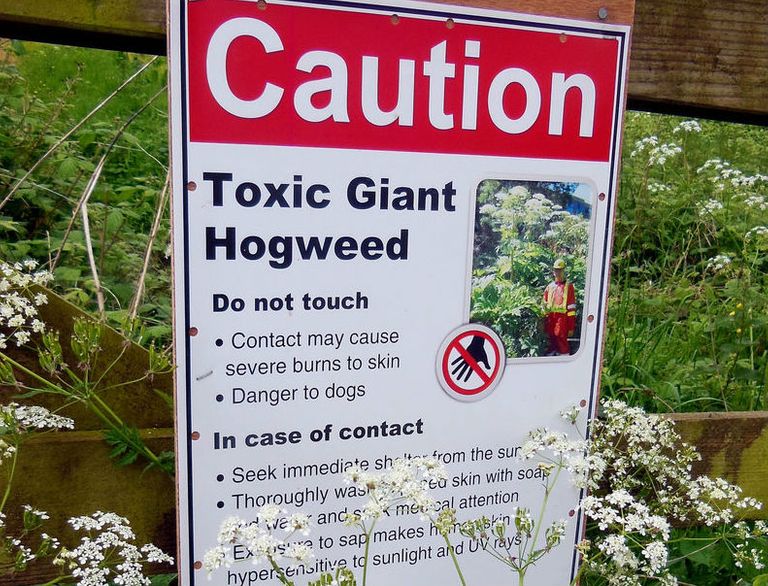
This won’t be an easy task, however, as the giant hogweed is often difficult to distinguish from several harmless plant varieties. Queen Anne’s lace (below) is nearly identical to giant hogweed and the two are commonly mistaken for one another.

If you do manage identify giant hogweed on your property, it won’t be easy to get rid of, either. Mowing, trimming, or weed-whacking will only destroy the top half of the plant, allowing the roots to regrow the weed in a matter of weeks.
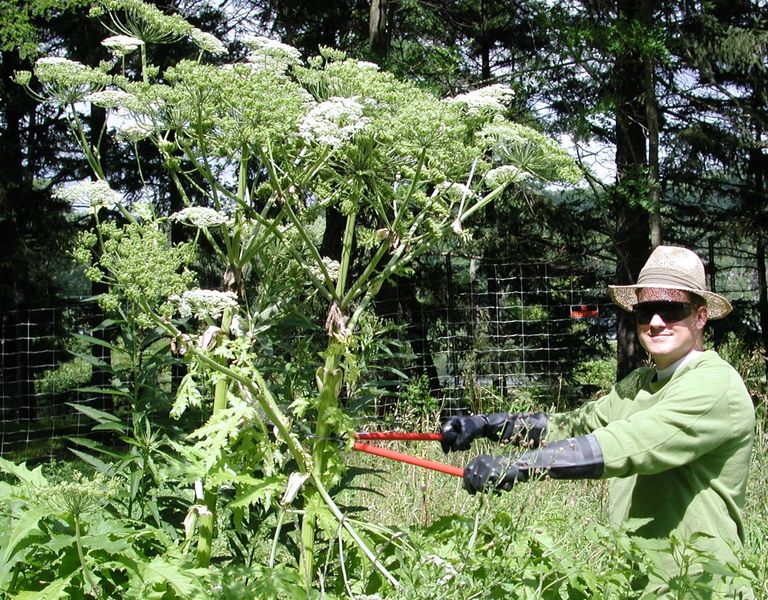
Instead, look to a landscape professional to get the job done. This way, you can avoid unintentionally exposing yourself or your family to painful toxins and ensure that the weed doesn’t come back next spring.
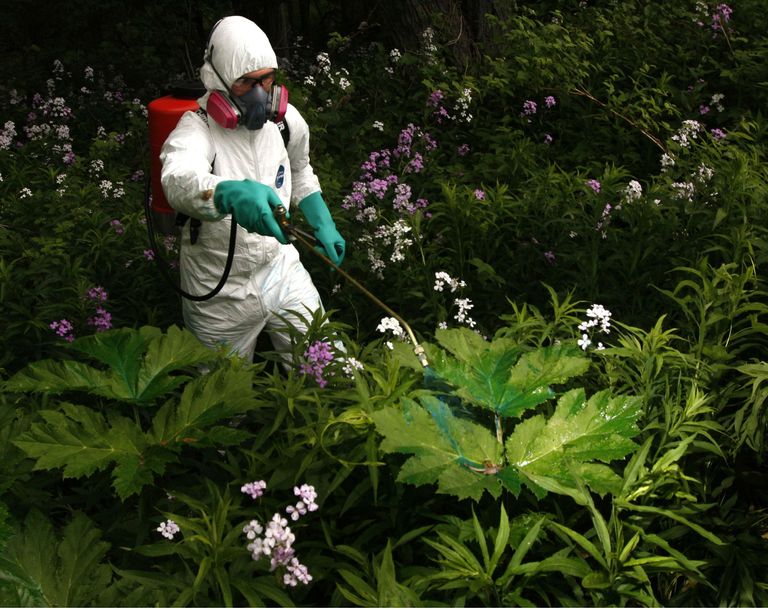
But even with your yard clear of giant hogweed, there are still plenty of plants to keep an eye out for — and not just the nasty ones, either. In fact, there are a handful of flowers and shrubs that could save your life in a pinch.
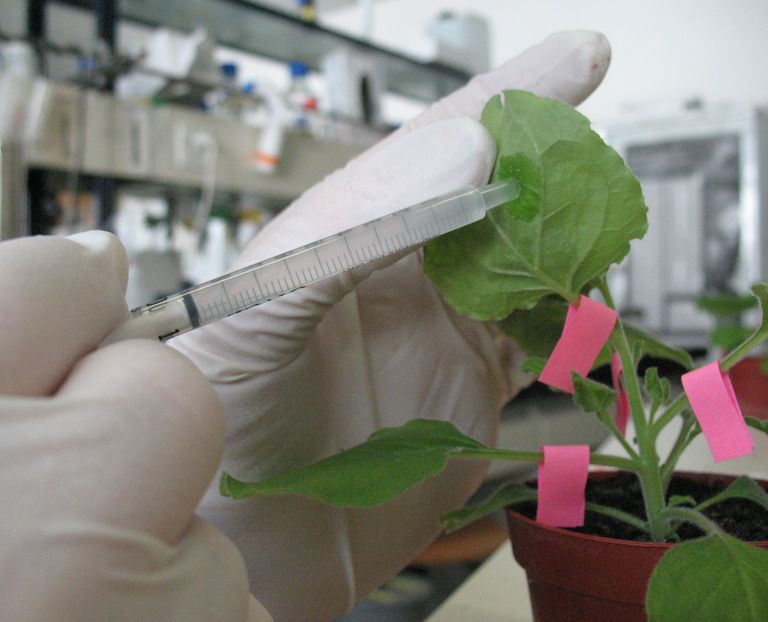
1. Rafflesia flower: These are the largest flowers in the world. They can grow up to 39 inches in diameter and can weigh up to 22 pounds. If you ever stumble upon them in southeast Asia — and just so happen to be suffering from internal bleeding — ingest the flower to stop the flow.
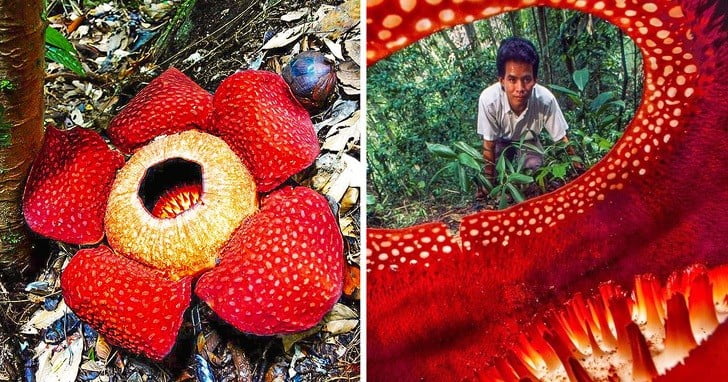
2. Wolffia globosa (Watermeal): Contrary to the Rafflesia, this plant is the world’s smallest plant. It floats at the surface of ponds and can sometimes grow at the top of fish tanks. If you’re ever lost and find these plants, then you’ve just stumbled upon dinner for the night. Make a fire and roast the sweet cabbage-tasting treat that’s rich in vitamins A, B2, B6, C, and nicotinic acid.
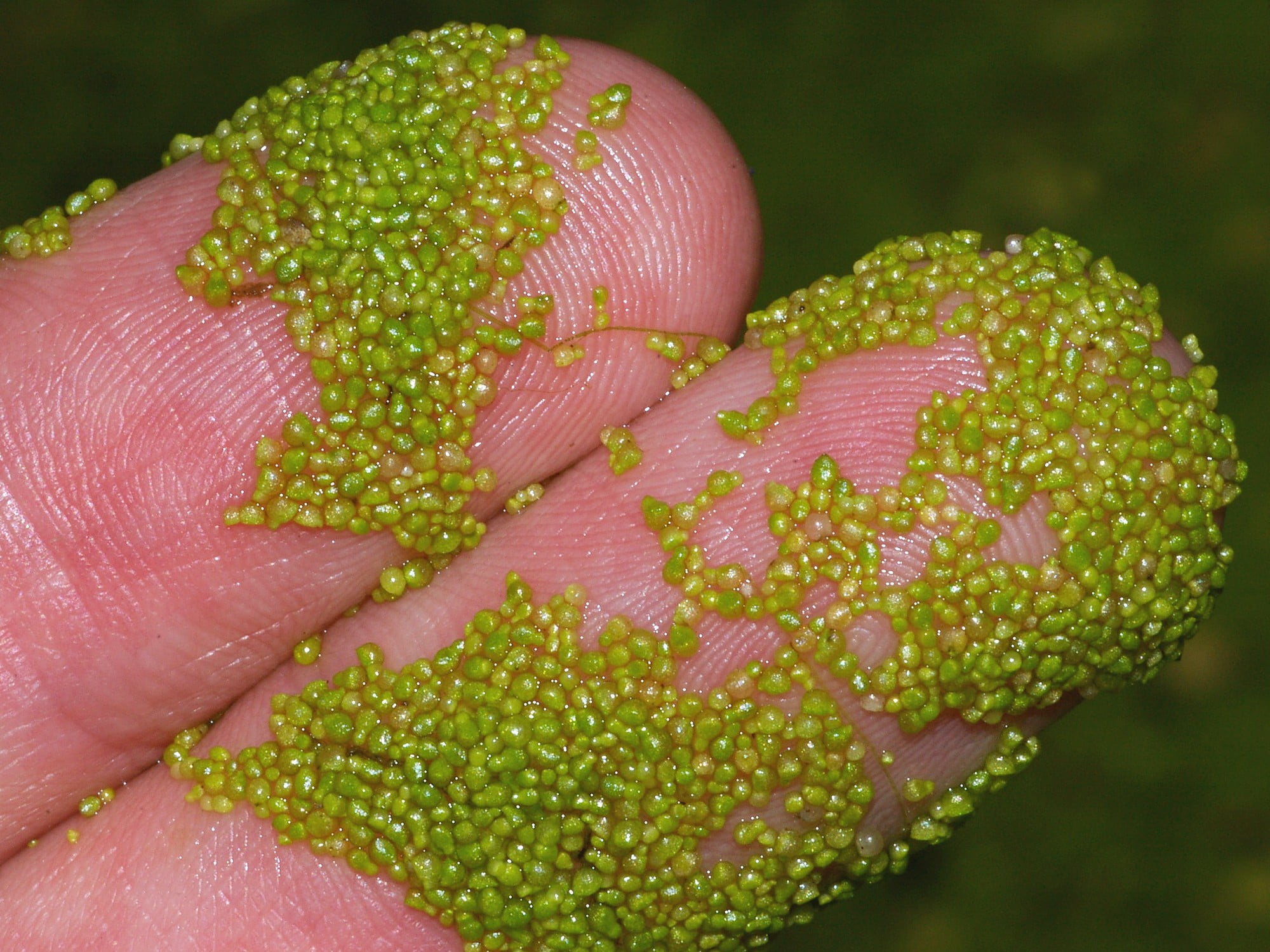 Christian Fischer
Christian Fischer
3. Bull thistle: This scary looking plant is actually quite useful if you find it in the wild. The roots, stems, flowers, and leaves can be eaten if you’re stranded and starving. If you’re trying to cook something else, dried bull thistle is flammable and will help start a fire.
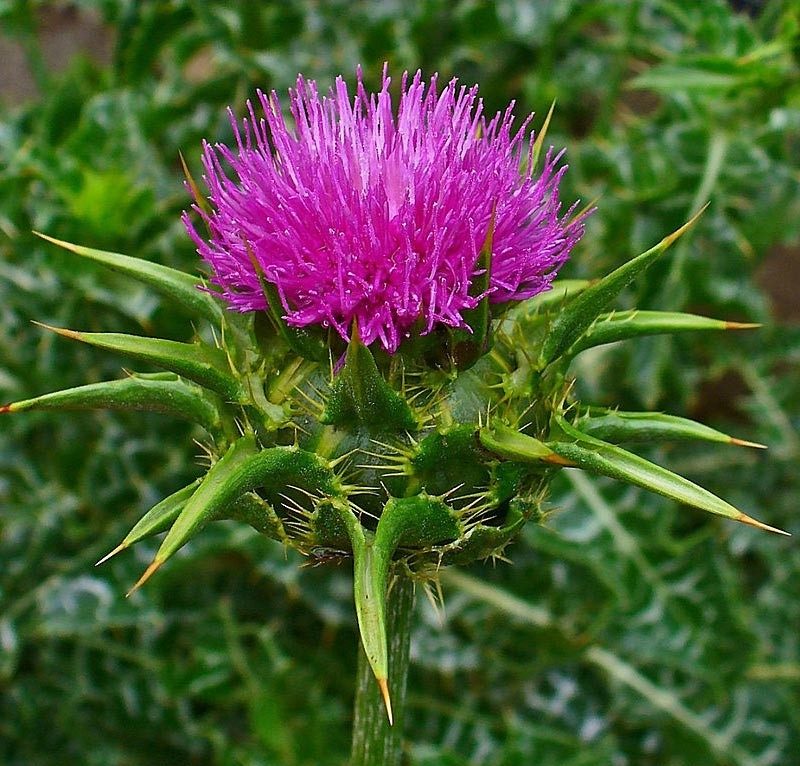
4. Bleeding Tooth Fungus: Found in Europe and the North American Pacific Northwest, this “bleeding” mushroom is not edible and it won’t send you to Strawberry Fields. If you do eat it, an overwhelming taste of bitter pepper will fill your taste buds — you’ll become nauseous and your gag reflex will trigger. It won’t kill you, but it won’t help you either!
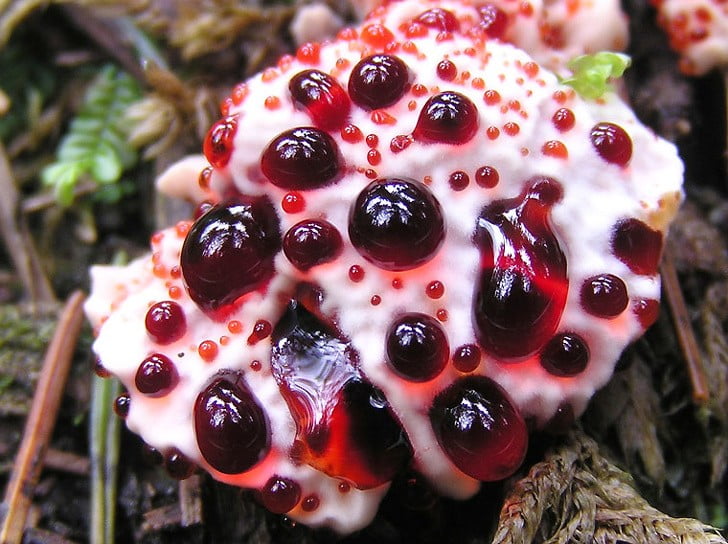
5. Aloe vera: This “wonder flower” is widely known for its healing powers, but if you find it in the wild you’re in for a real treat. Aloe helps with skin irritations like rashes and burns, but it also has antibacterial properties that can be used for cuts.
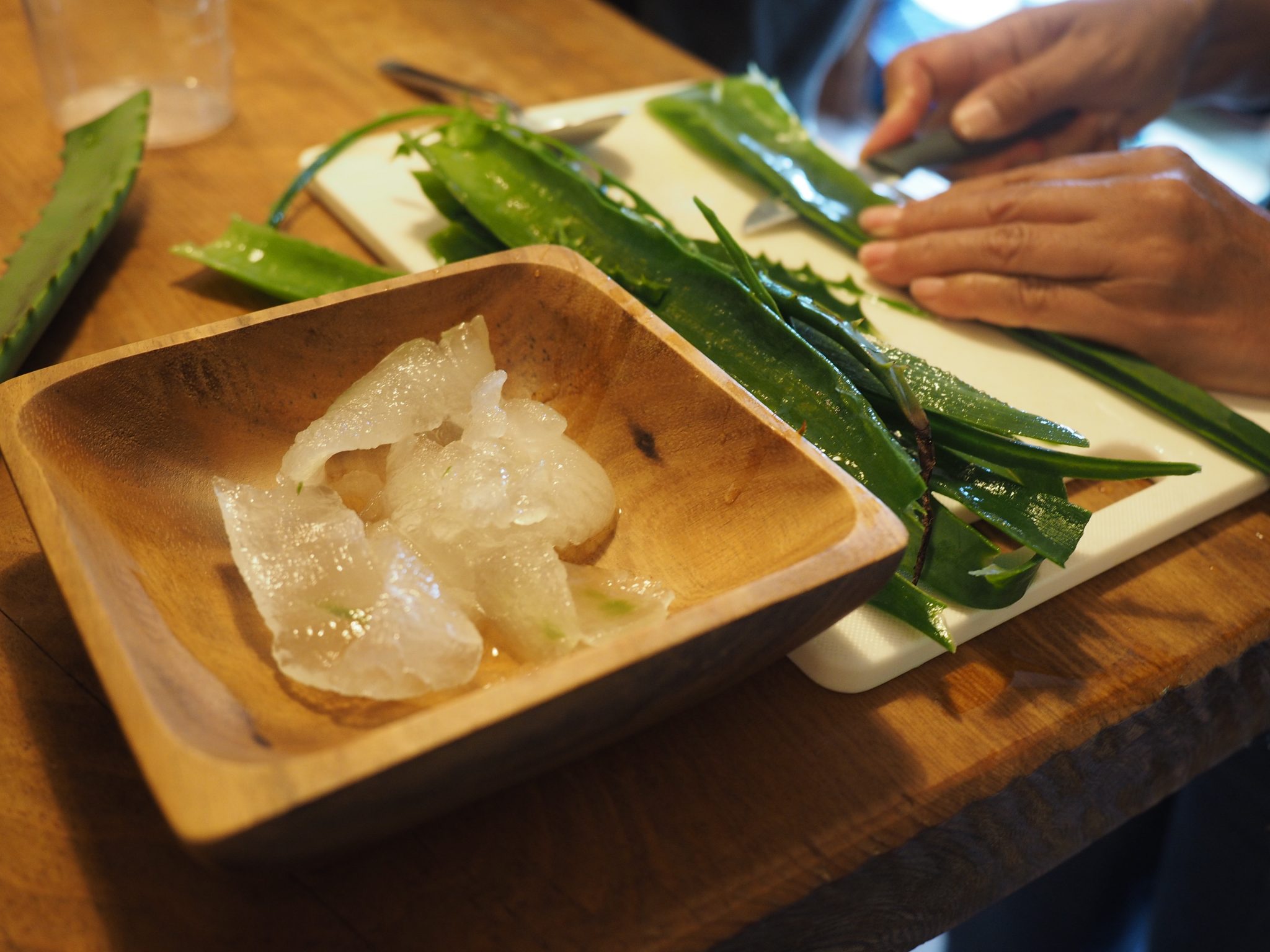
6. Pineapple Weed: Hikers have long looked for this plant as a source of nutrition. Although it doesn’t taste like pineapple, it still provides energy for the whole day. Visually similar to chamomile, you can also make a healthy tea with it or mash it up and use it as an insect repellent.
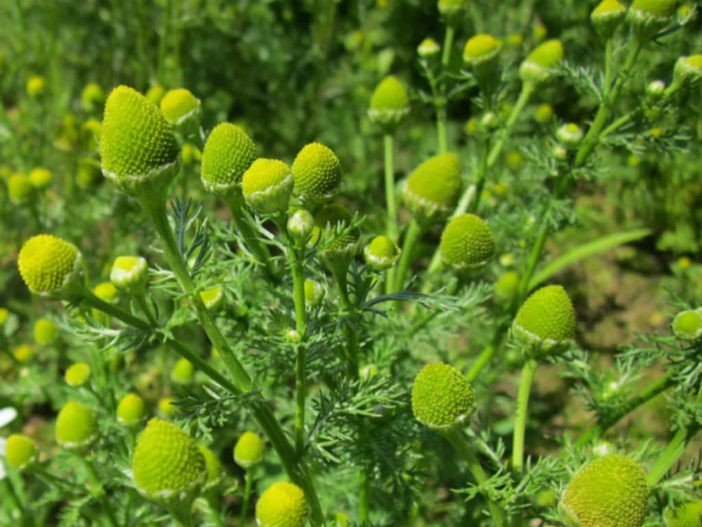 Pixabay
Pixabay
7. Red Cup Mushroom: These intriguing “scarlet elf cups” are pretty useless. They have no nutritional value, are very dry and tasteless, and if eaten in large quantities, they’ll cause more harm then good. But, if you must collect water from a nearby stream, these little guys make great cups!
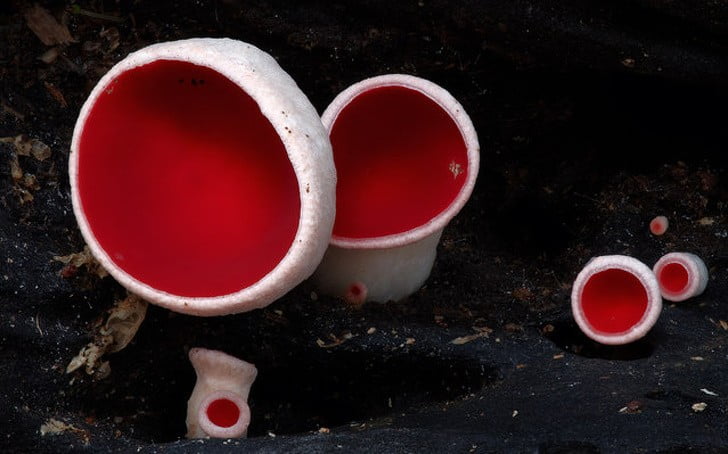 Imgur
Imgur
8. Mullein: This might be one of the most important plants on this list. If you’re ever stranded for a long period of time, chances are you’re going to need to go to the bathroom. This plant’s common name is “cowboy toilet paper.” Its soft leaves make a perfect substitute for the plush roll. Just look for a plant with a long stem, short yellow flowers, and soft leaves, and you’re in luck!
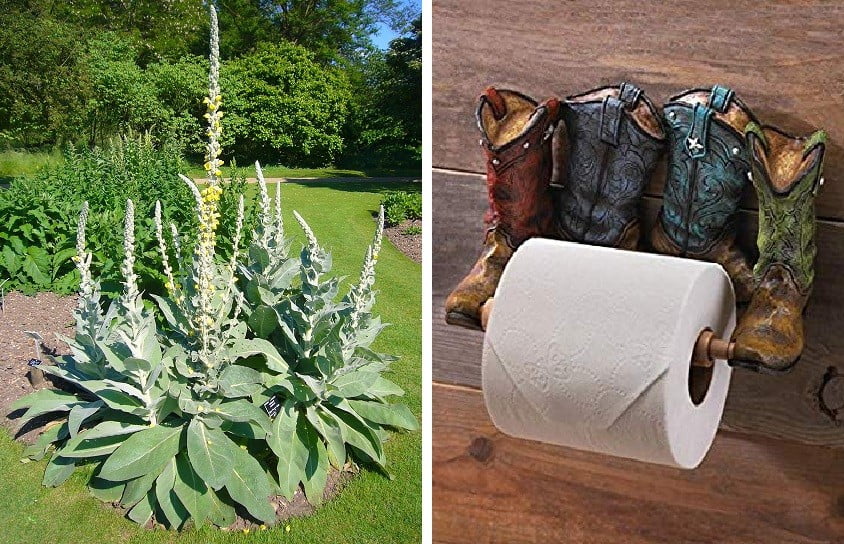
9. Burdock: The best way to identify this plant is to walk through a field and see what sticks. Seriously, this plant is covered with annoying, sticky burrs that attach themselves to anything they touch. But if you get past that, the stem has amazing healing and antibacterial powers. Additionally, if you’re diabetic and need insulin, the root will lower high glucose levels.
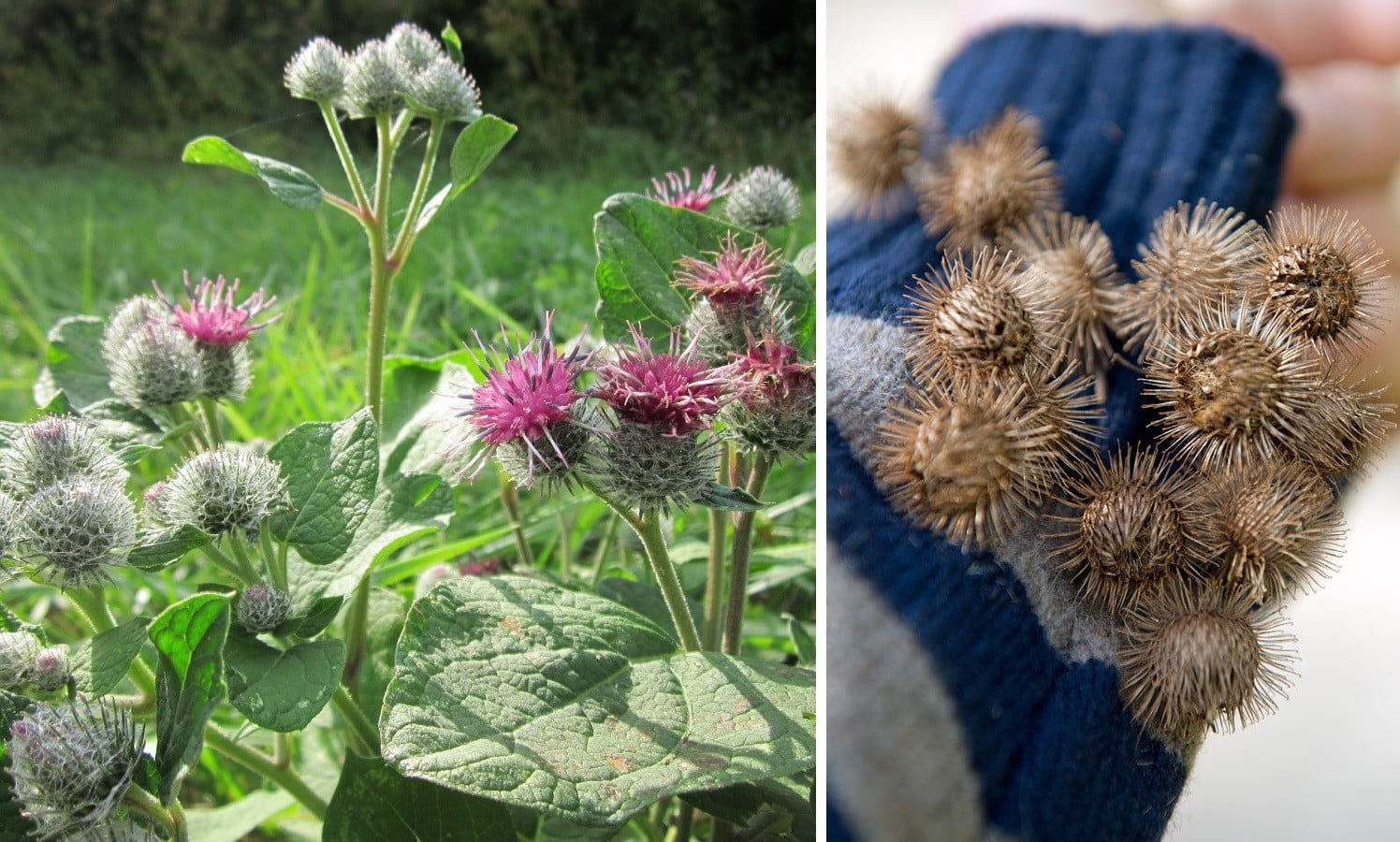
10. Dandelions: What is normally the unwanted weed in the garden can be very useful if stumbled upon in the wild. The entire plant can be ingested raw, although the roots are very bitter. The yellow flowers can be used to make syrup, or, if you’re looking for a good time, they make dandelion wine, too.
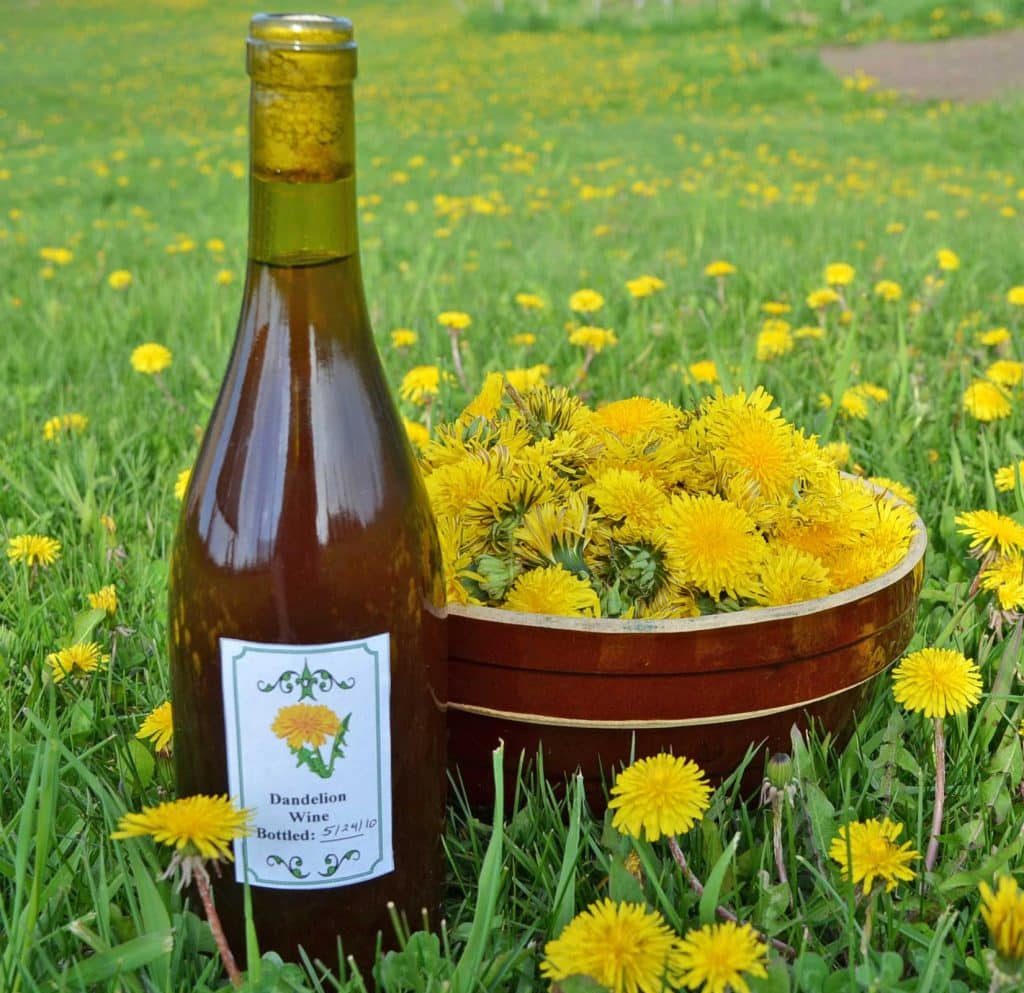
11. White Snakeroot: Abraham Lincoln’s own mother died from milk poisoning. What poisoned the milk? Well, the cows the family drank from ingested this flower. Don’t be like Mama Lincoln. When you see this plant, run!
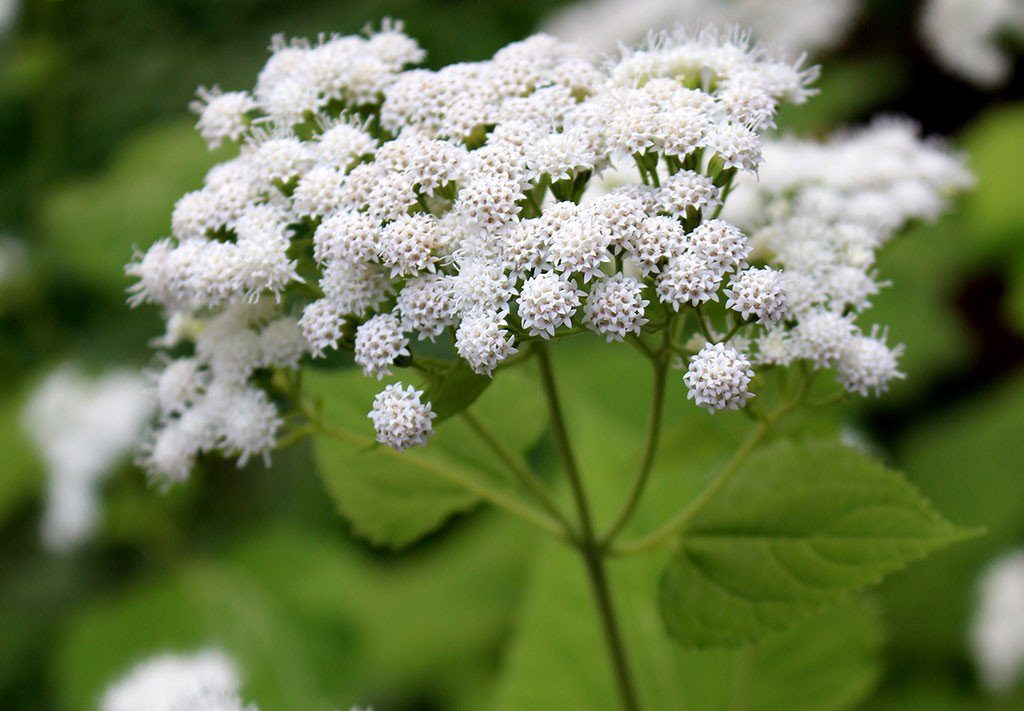
12. Chicory: It’s day five. You’re still stranded and now you’re having coffee withdrawals. Don’t worry, look for the bushy plant with small blue, lavender, and white flowers. If you toast them you can use the flowers as a coffee substitute to get your fix. It’s not a pumpkin spiced latte, but you can’t be picky in the wild.
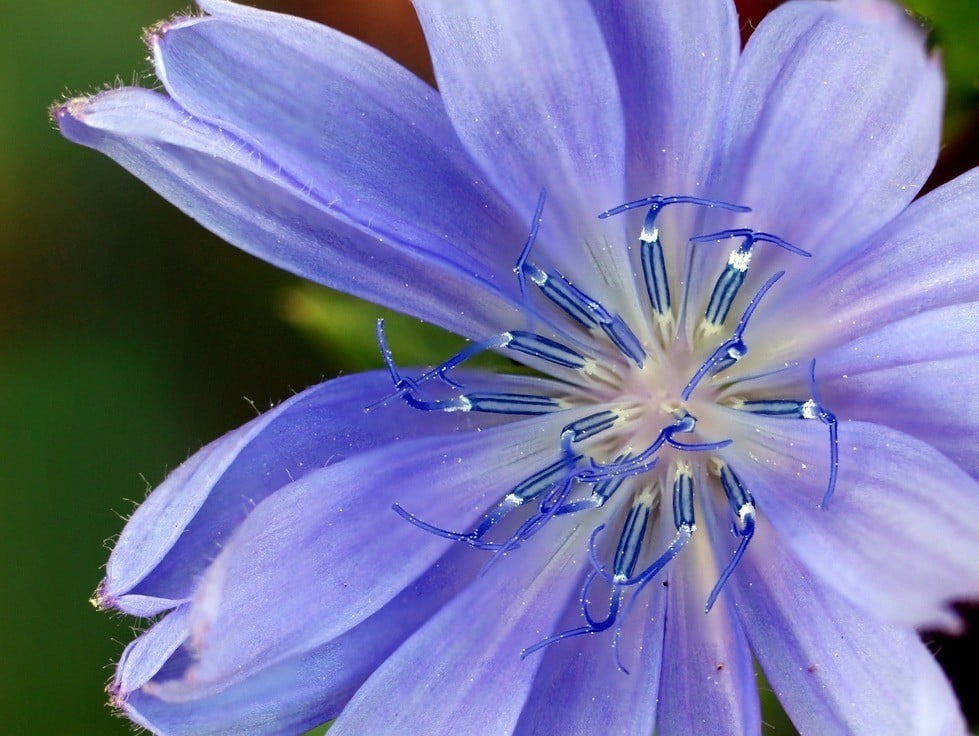
13. Wood Sorrel: The great thing about this plant is that it grows all over the world, so it doesn’t matter where you get lost. The flowers are edible and a great source of Vitamin C, and if you just chew them, they help alleviate thirst. Additionally, if you have sores in your mouth for whatever reason, eating this helps promote healing.
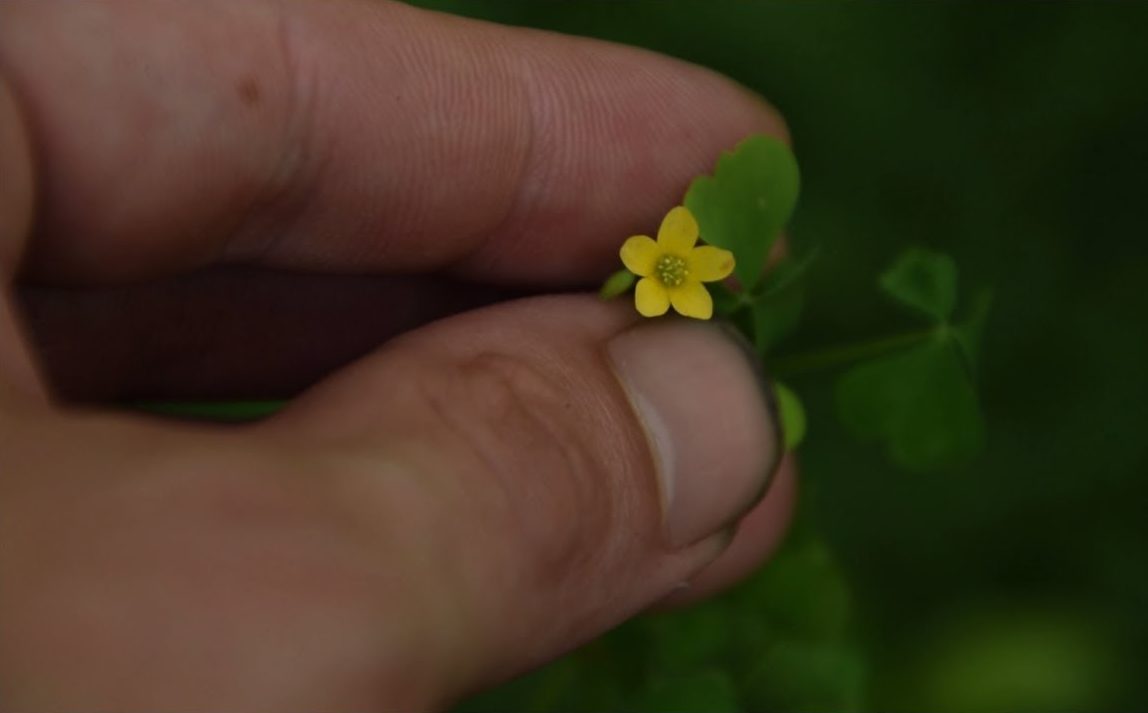
14. Angel’s Trumpet: Contrary to its angelic name, these flowers are pure evil. Not only will you die if you eat them, but they will torture you before it happens. If ingested, expect to experience things like paralysis, hallucinations, a violent trance, AND THEN death. So tell your friends, toot your own plant-connoisseur horn because this knowledge is life-saving.
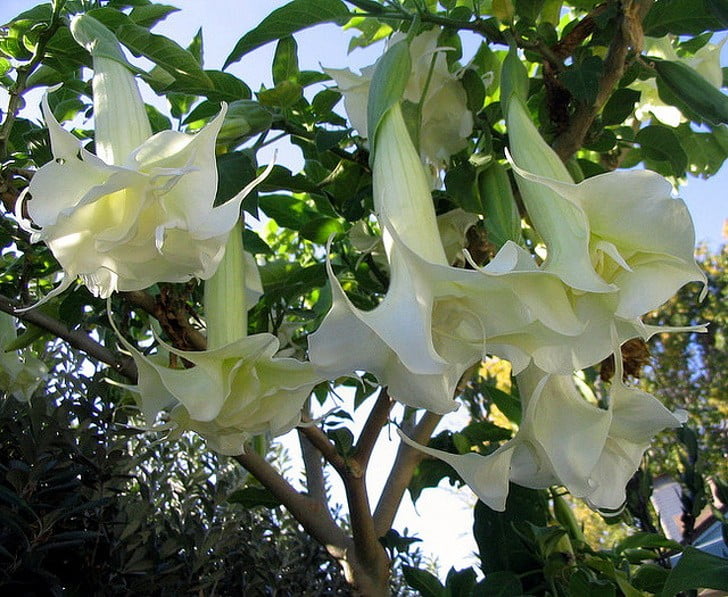 WikiCommons
WikiCommons
15. Narrow-Leaved Yucca: The interior part of the roots can help you keep clean during your stay in the wild (whether it be intentional or accidental). Dig up the plant, peel off the outer layer of the root, and then grind it with a rock. Mix this substance with water and get to scrubbing. Like soap, the friction will produce foam.
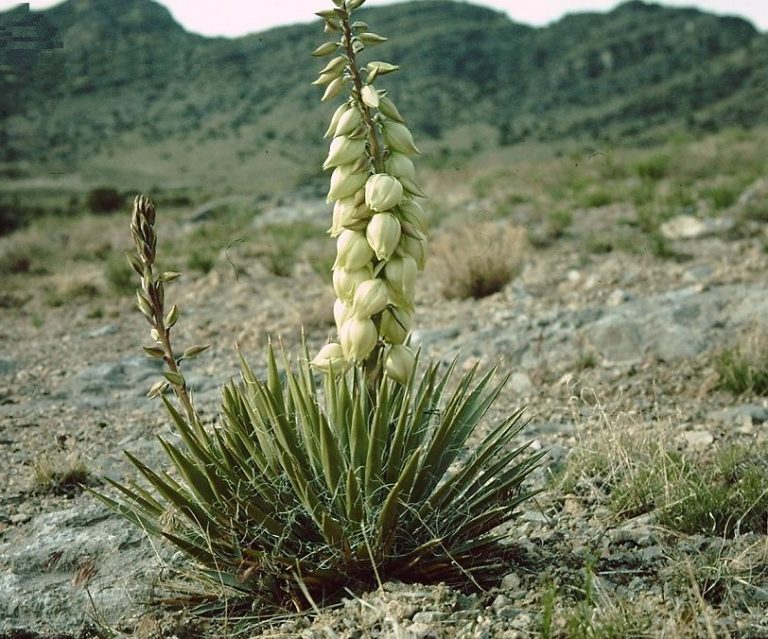
16. Sage: Besides using sage to cleanse your home of evil spirits, it can also cleanse your body of B.O. Just rub raw sage leaves all over your body for a natural deodorant. If you need a little more help killing the odor-causing bacteria, you can take a smoke bath in burning sage that will leave you smelling fresh.
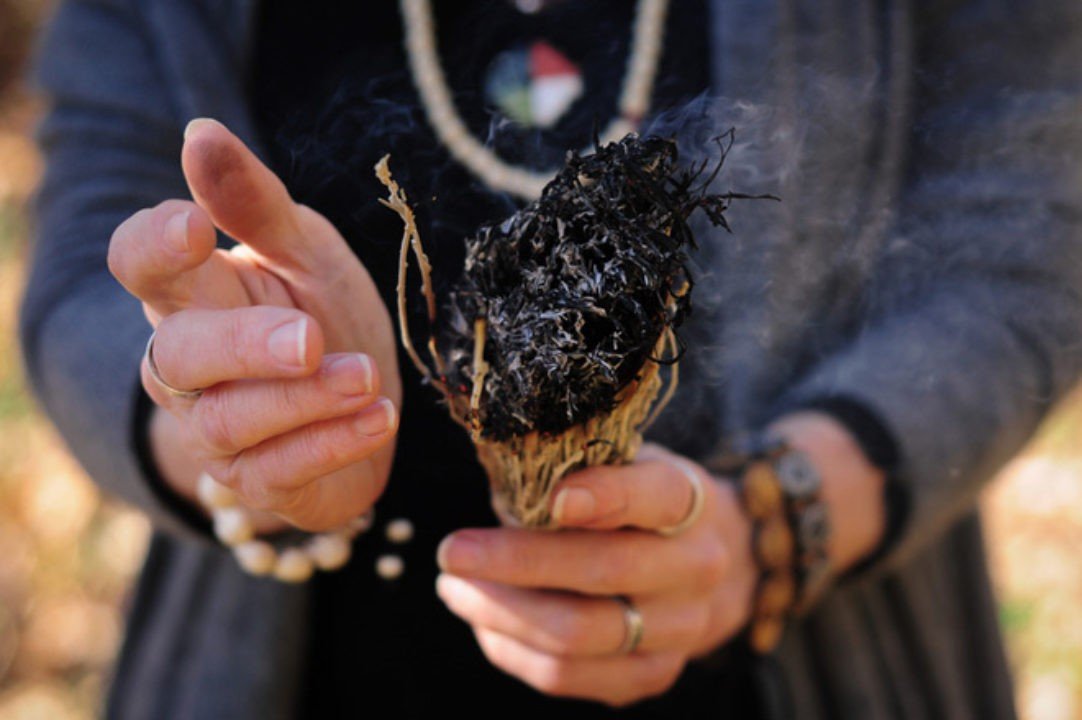
17. Rocky Mountain Willows: Named after the most common region they’re found in, these flowers are like nature’s aspirin. Got a fever? Have a headache? Fell down a mountainside and broke your arm? Ingesting this plant acts as a pain killer. Also, eat something you shouldn’t have and now your stomach is upset? Works for that, too!
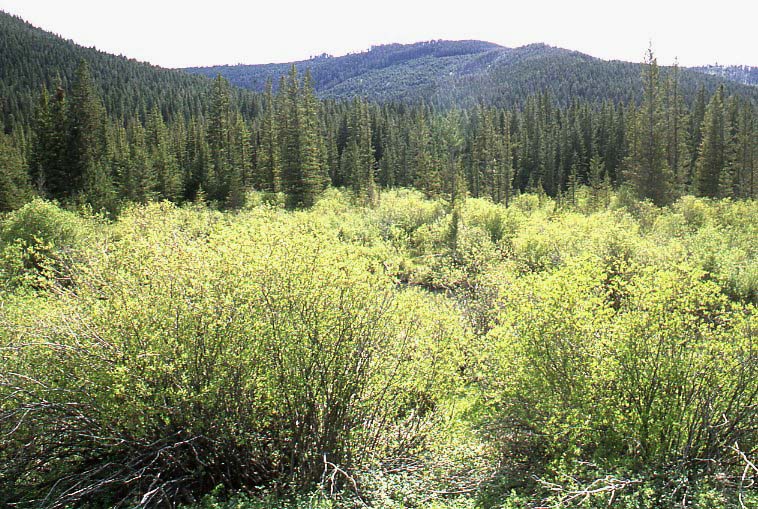
18. Nightshade: With a name like that, you know this plant should NOT be messed with. The roots are by far the most poisonous, but just two berries can kill a child. If you eat a little by mistake and actually live, it’ll cause you intense hallucinations and delirium. So if you see a dark, ominous plant… probably best to just leave it alone!
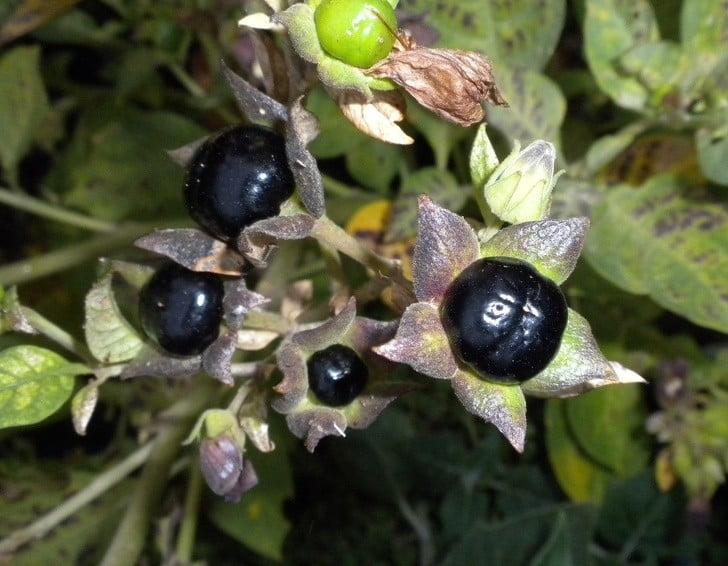
19. Trembling Aspen: If you’re stuck out in the wilderness with little to no shelter, chances are you’re going to get a pretty nasty sunburn. So find this plant and rub the chalky bark all over your body for a natural sunblock protection!
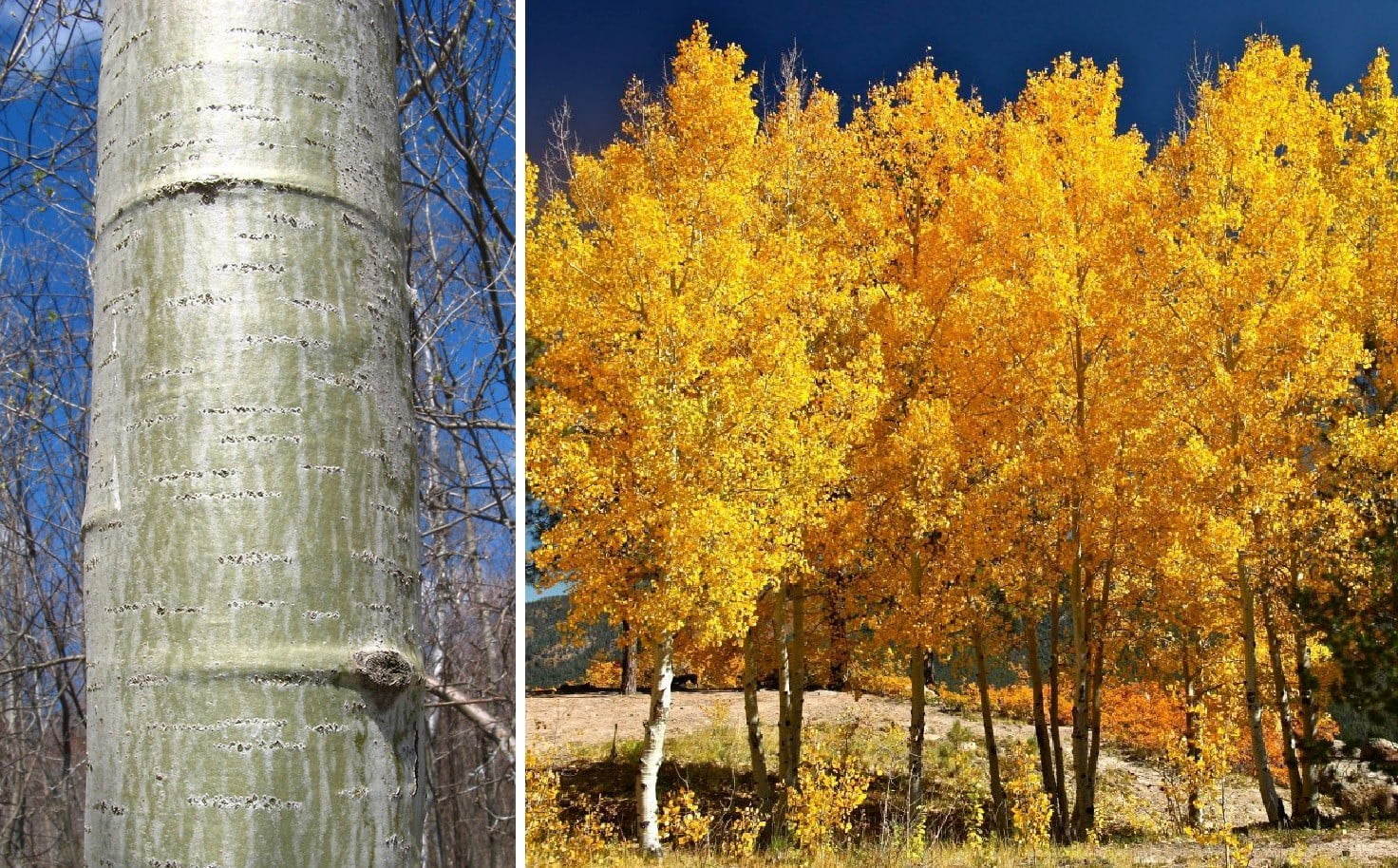
20. Prickly Pear Cactus: What looks like a plant you should steer clear of is actually one of the few helpful desert plants. If you don’t have a source of food, you can eat the reddish fruits at the top. Just remember to remove the prickly outer layer first. The inside of the cactus itself is also great at helping fight high cholesterol and high blood pressure, controlling sugar levels, and curing a hangover.
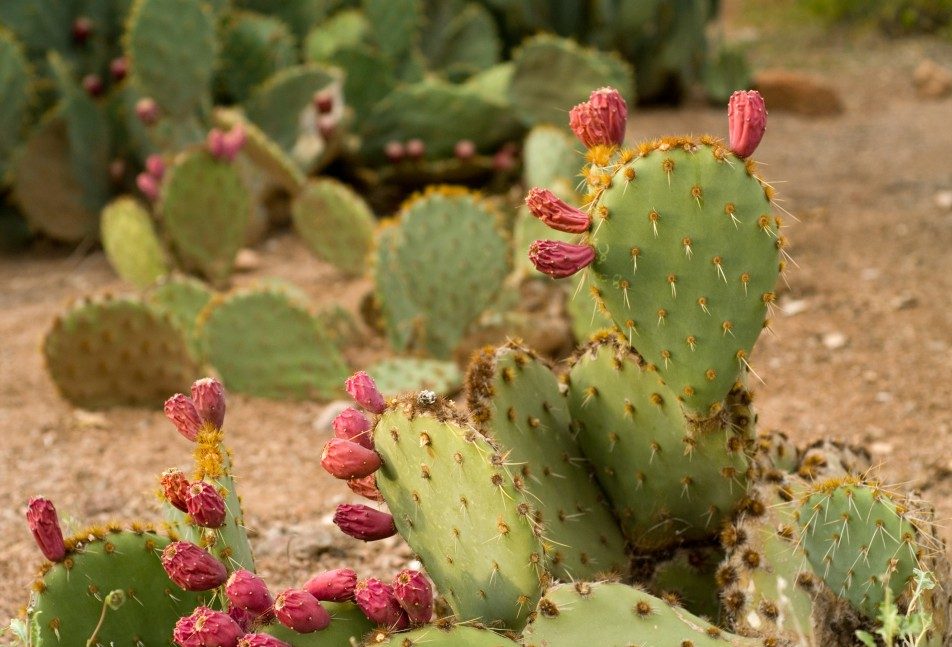
The post Gardening Hacks That Are Giving People Gorgeous Yards appeared first on Eternally Sunny.
